Typhoon slams Philippines; high death toll feared
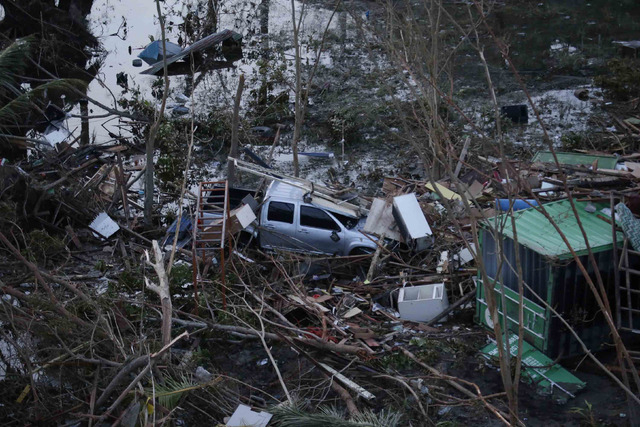

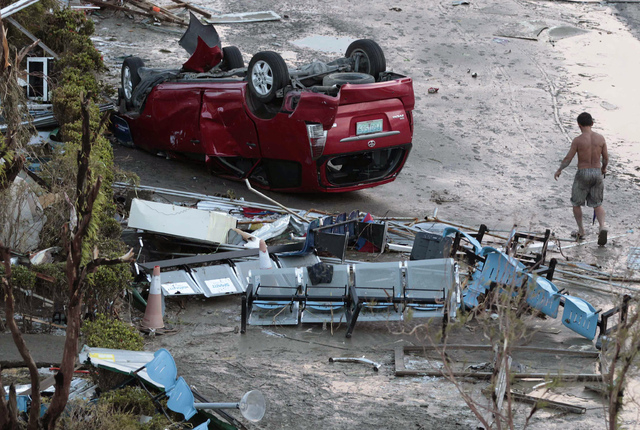
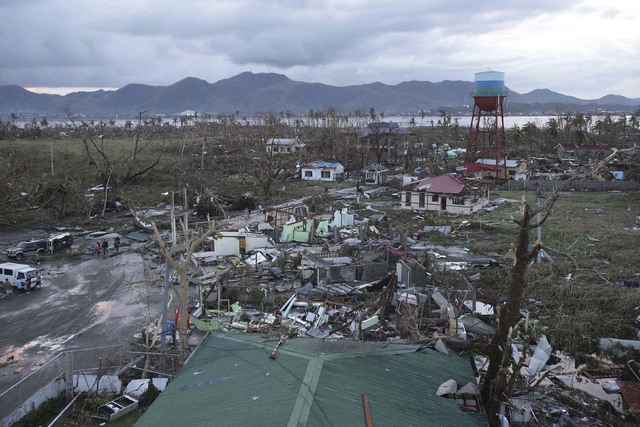
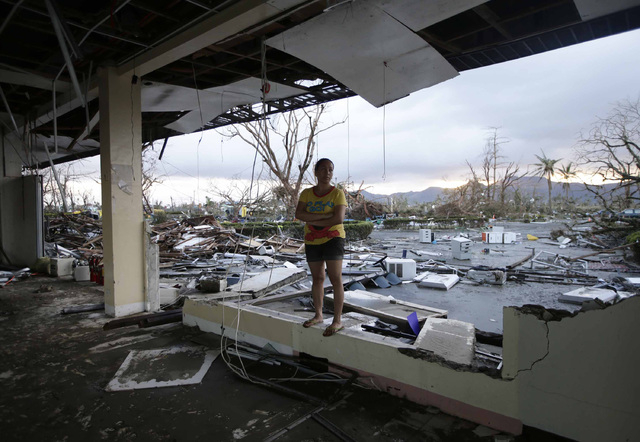

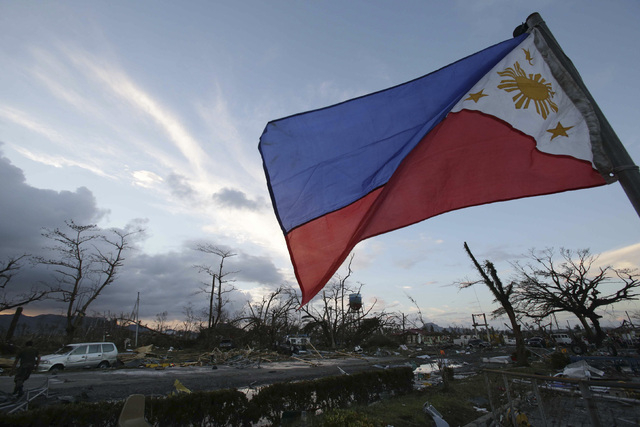
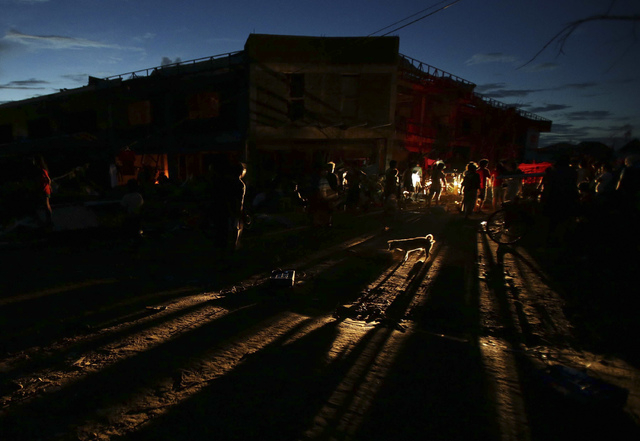

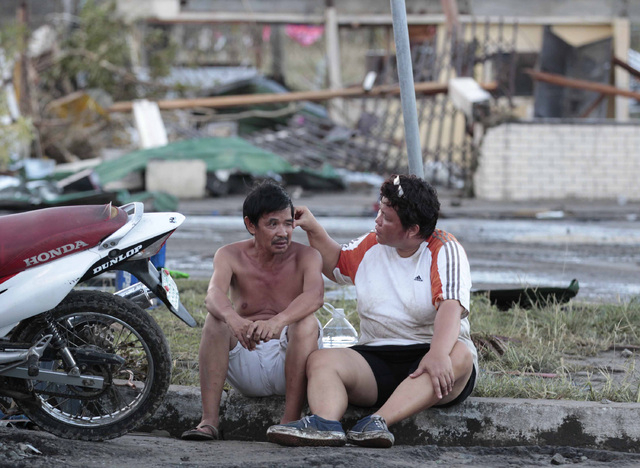


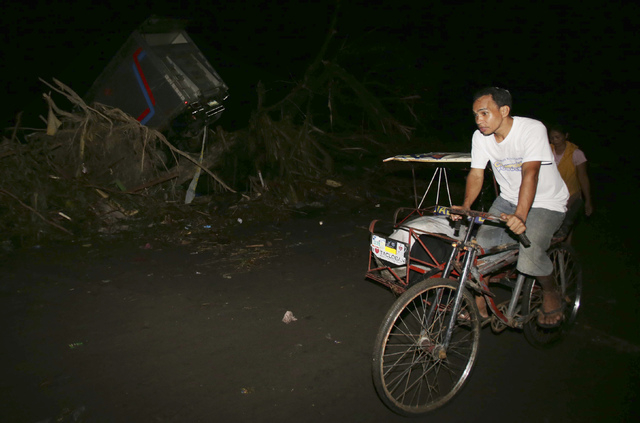

TACLOBAN, Philippines — The central Philippine city of Tacloban was in ruins Saturday, a day after being ravaged by one of the strongest typhoons on record, as horrified residents spoke of storm surges as high as trees and authorities said they were expecting a “very high number of fatalities.”
At least 138 people were confirmed dead in the aftermath of Typhoon Haiyan. But Philippine Red Cross Secretary General Gwen Pang said that agency field staff in the region estimated the toll was about 1,000. Pang, however, emphasized that it was “just an estimate.”
The typhoon slammed into six central Philippine islands on Friday, wiping away buildings and leveling seaside homes. At least 118 of the confirmed deaths were on hardest-hit Leyte Island, where Tacloban is located, said national disaster agency spokesman Maj. Reynaldo Balido.
But after arriving in Tacloban on Saturday, Interior Secretary Mar Roxas said it was too early to know how many people had died in the storm, which was heading toward Vietnam after moving away from the Philippines.
“The rescue operation is ongoing. We expect a very high number of fatalities as well as injured,” Roxas said. “All systems, all vestiges of modern living — communications, power, water — all are down. Media is down, so there is no way to communicate with the people in a mass sort of way.”
President Benigno Aquino III said the casualties “will be substantially more,” but gave no figure or estimate. He said the government’s priority was to restore power and communications in isolated areas to allow for the delivery of relief and medical assistance to victims.
The Philippine Red Cross and its partners were preparing for a major relief effort “because of the magnitude of the disaster,” said the agency’s chairman, Richard Gordon.
The airport in Tacloban, a city of 200,000 located about 580 kilometers (360 miles) southeast of Manila, looked like a muddy wasteland of debris Saturday, with crumpled tin roofs and upturned cars. The airport tower’s glass windows were shattered, and air force helicopters were busy flying in and out at the start of relief operations.
“The devastation is, I don’t have the words for it,” Roxas said. “It’s really horrific. It’s a great human tragedy.”
Defense Secretary Voltaire Gazmin said Aquino was “speechless” when he told him of the devastation the typhoon had wrought in Tacloban.
“I told him all systems are down,” Gazmin said. “There is no power, no water, nothing. People are desperate. They’re looting.”
U.S. Marine Col. Mike Wylie surveyed the damage in Tacloban prior to possible American assistance. “The storm surge came in fairly high and there is significant structural damage and trees blown over,” said Wylie, who is a member of the U.S.-Philippines Military Assistance Group based in Manila.
U.S. Secretary of State John Kerry said in a statement that America “stands ready to help.”
The president of the European Commission, Jose Manuel Barroso, said in a message to Aquino that the EC had sent a team to assist the Philippine authorities and that “we stand ready to contribute with urgent relief and assistance if so required in this hour of need.”
Weather officials said Haiyan had sustained winds of 235 kilometers per hour (147 miles per hour), with gusts of 275 kph (170 mph), when it made landfall. By those measurements, Haiyan would be comparable to a strong Category 4 hurricane in the U.S., and nearly in the top category, a 5.
Hurricanes, cyclones and typhoons are the same, but have different names in different parts of the world.
One Tacloban resident said he and others took refuge inside a parked Jeep to protect themselves from the storm, but the vehicle was swept away by a surging wall of water.
“The water was as high as a coconut tree,” said 44-year-old Sandy Torotoro, a bicycle taxi driver who lives near the airport with his wife and 8-year-old daughter. “I got out of the Jeep and I was swept away by the rampaging water with logs, trees and our house, which was ripped off from its mooring.”
“When we were being swept by the water, many people were floating and raising their hands and yelling for help. But what can we do? We also needed to be helped,” Torotoro said.
In Torotoro’s village, bodies could be seen lying along the muddy main road, as residents who had lost their homes huddled, holding on to the few things they had managed to save. The road was lined with trees that had fallen to the ground.
Vice Mayor Jim Pe of Coron town on Busuanga, the last island battered by the typhoon before it blew away to the South China Sea, said most of the houses and buildings there had been destroyed or damaged. Five people drowned in the storm surge and three others were missing, he said by phone.
“It was like a 747 flying just above my roof,” he said, describing the sound of the winds. He said his family and some of his neighbors whose houses were destroyed took shelter in his basement.
Philippine broadcaster ABS-CBN showed fierce winds whipping buildings and vehicles as storm surges swamped Tacloban with debris-laden floodwaters.
In the aftermath of the storm, people were seen weeping while retrieving bodies of loved ones inside buildings and on a street that was littered with fallen trees, roofing material and other building parts torn off in the typhoon’s fury. All that was left of one large building whose walls were smashed in were the skeletal remains of its rafters.
Many packed evacuation centers collapsed in Tacloban as the typhoon raged, a police official said. He said he saw a popular mall being looted Saturday by residents who carted away anything they can lay their hands on, including a flat-screen TV, a small refrigerator, food items, clothes and even a Christmas tree. Smaller shops with guards brandishing their pistols were spared, said the official, who spoke on condition of anonymity because he was not authorized to talk to reporters.
ABS-CBN television anchor Ted Failon, who was able to report only briefly Friday from Tacloban, said the storm surge was “like the tsunami in Japan.”
“The sea engulfed Tacloban,” he said, explaining that a major part of the city is surrounded on three sides by the waters between Leyte and Samar islands.
The Philippine television station GMA reported that its news team saw 11 bodies, including that of a child, washed ashore Friday and 20 more bodies at a pier in Tacloban hours after the typhoon ripped through the coastal city.
At least 20 more bodies were taken to a church in nearby Palo town that was used as an evacuation center but had to be abandoned when its roofs were blown away, the TV network reported. TV images showed howling winds peeling off tin roof sheets during heavy rain.
Ferocious winds felled large branches and snapped coconut trees. A man was shown carrying the body of his 6-year-old daughter who had drowned, and another image showed vehicles piled up in debris.
Nearly 800,000 people were forced to flee their homes and damage was believed to be extensive. About 4 million people were affected by the typhoon, the national disaster agency said.
Relief workers said they were struggling to find ways to deliver food and other supplies, with roads blocked by landslides and fallen trees.
Tim Ticar, a local tourism officer, said 6,000 foreign and local tourists were stranded on the popular resort island of Boracay, one of the tourist spots in the typhoon’s path.
The storm’s sustained winds weakened Saturday to 163 kph (101 mph) with stronger gusts as it blew farther away from the Philippines toward Vietnam.
Haiyan was forecast to hit central Vietnam’s coast on Sunday afternoon, making its way to the northern part of the country before likely weakening to a tropical storm.
Vietnamese authorities in four central provinces were evacuating more than 500,000 people from high-risk areas to government buildings, schools and other concrete homes able to withstand strong winds.
“The evacuation is being conducted with urgency,” disaster official Nguyen Thi Yen Linh said from central Danang City, where some 76,000 were being moved to safety.
Hundreds of thousands of others were being taken to shelters in the provinces of Quang Ngai, Quang Nam and Thua Thien Hue. Schools were closed and two deputy prime ministers were sent to the region to direct the preparations.
———
Associated Press writers Oliver Teves and Teresa Cerojano in Manila, and Minh Tran in Hanoi, Vietnam, contributed to this report.












